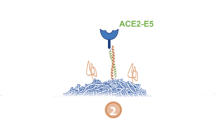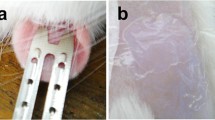Abstract
Calcitonin is a 32-amino acid peptide, which causes a decrease in blood calcium levels and bone resorption in the human body. It is produced in different species. Salmon calcitonin is used as a medicine for diseases such as osteoporosis, Paget’s disease, and hypercalcemia. However, the salmon calcitonin peptide used as a medicine, could induce immune responses in humans. Decreasing the antigenicity of salmon calcitonin could improve this molecule for pharmaceutical usage. In this study, improving physicochemical properties and reducing allergenicity and especially the antigenicity of salmon calcitonin were followed. The calcitonin sequences of different species were evaluated, and those with better properties were considered as a guide for peptide engineering. In silico methods were utilized to characterize the properties of the reviewed calcitonin sequences, and the best sequences (the calcitonin of sheep, dog, rat, and human) were used as a template to decrease the antigenicity of salmon calcitonin. The epitopic parts, i.e., amino acids 16 to 29, were identified by different servers. Hot spot residues including Y22, N26, T27, and S29 were characterized based on the main criteria of being a B-cell epitope including convexity index, hydrophilicity, and surface accessibility. These residues were replaced with lower antigenic counterparts. Results showed the final selected mutant (T27V/S29V) had a lower antigenicity and higher solubility and stability than salmon calcitonin. Thus, our suggested mutant could be a potential alternative candidate to salmon calcitonin. However, future in vitro and in vivo evaluations are needed to confirm its suitability for clinical usage.






Similar content being viewed by others
REFERENCES
Naot D., Musson D.S., Cornish J. 2019. The activity of peptides of the calcitonin family in bone. Physiol. Rev. 99 (1), 781‒805.
Sekiguchi T. 2018. The calcitonin/calcitonin gene-related peptide family in invertebrate deuterostomes. Front. Endocrinol. 9, 695.
Hoogwerf B.J., Doshi K.B., Diab D. 2008. Pramlintide, the synthetic analogue of amylin, physiology, pathophysiology, and effects on glycemic control, body weight, and selected biomarkers of vascular risk. Vasc. Health Risk. Manage. 4 (2), 355‒362.
Nikitenko L., Fox S., Kehoe S., Rees M., Bicknell R. 2006. Adrenomedullin and tumour angiogenesis. Br. J. Cancer. 94 (1), 1‒7.
Caron K.M., Smithies O. 2001. Extreme hydrops fetalis and cardiovascular abnormalities in mice lacking a functional Adrenomedullin gene. Proc. Natl. Acad. Sci. U. S. A. 98 (2), 615‒619.
Shindo T., Kurihara Y., Nishimatsu H., Moriyama N., Kakoki M., Wang Y., Imai Y., Ebihara A., Kuwaki T., Ju K.-H. 2001. Vascular abnormalities and elevated blood pressure in mice lacking adrenomedullin gene. Circulation. 104 (16), 1964‒1971.
Cornish J., Callon K., Bava U., Kamona S., Cooper G., Reid I. 2001. Effects of calcitonin, amylin, and calcitonin gene-related peptide on osteoclast development. Bone. 29 (2), 162‒168.
Dacquin R., Davey R.A., Laplace C., Levasseur R., Morris H.A., Goldring S.R., Gebre-Medhin S., Galson D.L., Zajac J.D., Karsenty G. 2004. Amylin inhibits bone resorption while the calcitonin receptor controls bone formation in vivo. J. Cell Biol. 164 (4), 509‒514.
Naot D., Cornish J. 2008. The role of peptides and receptors of the calcitonin family in the regulation of bone metabolism. Bone. 43 (5), 813‒818.
Kapurniotu A. 2004. Contribution of conformationally constrained calcitonin (Ct) analogs to the understanding of the structural and conformational requirements of calcitonin bioactivity and to the design of potent agonists. Curr. Med. Chem. 11 (21), 2845‒2865.
Johansson E., Hansen J.L., Hansen A.M.K., Shaw A.C., Becker P., Schäffer L., Reedtz-Runge S. 2016. Type II turn of receptor-bound salmon calcitonin revealed by X-ray crystallography. J. Biol. Chem. 291 (26), 13689‒13698.
Pearse A.G.E. 1966. The cytochemistry of the thyroid C cells and their relationship to calcitonin. Proc. R Soc. London, Ser. B. 164 (996), 478‒487.
Friedman J., Raisz L.G. 1965. Thyrocalcitonin: Inhibitor of bone resorption in tissue culture. Science. 150 (3702), 1465‒1467.
Granholm S., Henning P., Lerner U.H. 2011. Comparisons between the effects of calcitonin receptor-stimulating peptide and intermedin and other peptides in the calcitonin family on bone resorption and osteoclastogenesis. J. Cell. Biochem. 112 (11), 3300‒3312.
Felsenfeld A.J., Levine B.S. 2015. Calcitonin, the forgotten hormone: Does it deserve to be forgotten? Clin. Kidney J. 8 (2), 180‒187.
Stroop S.D., Nakamuta H., Kuestner R.E., Moore E.E., Epand R.M. 1996. Determinants for calcitonin analog interaction with the calcitonin receptor N-terminus and transmembrane-loop regions. Endocrinology. 137 (11), 4752‒4756.
Wimalawansa S.J. 1997. Amylin, calcitonin gene-related peptide, calcitonin, and adrenomedullin: A peptide superfamily. Crit. Rev. Neurobiol. 11 (2-3), 167‒239.
Stevenson C.L. 2009. Advances in peptide pharmaceuticals. Curr. Pharm. Biotechnol. 10 (1), 122‒137.
Guggi D., Bernkop-Schnürch A. 2003. In vitro evaluation of polymeric excipients protecting calcitonin against degradation by intestinal serine proteases. Int. J. Pharm. 252 (1-2), 187‒196.
Lang S.R., Staudenmann W., James P., Manz H.-J., Kessler R., Galli B., Moser H.-P., Rummelt A., Merkle H.P. 1996. Proteolysis of human calcitonin in excised bovine nasal mucosa: Elucidation of the metabolic pathway by liquid secondary lonization mass spectrometry (LSIMS) and matrix assisted laser desorption lonization mass spectrometry (MALDI). Pharm. Res. 13 (11), 1679‒1685.
Kozono T., Hirata M., Endo K., Satoh K., Takanashi H., Miyauchi T., Fukushima N., Kumagai E., Abe S., Matsuda E. 1992. A chimeric analog of human and salmon calcitonin eliminates antigenicity and reduces gastrointestinal disturbances. Endocrinology. 131 (6), 2885‒2890.
Zarei M., Nezafat N., Rahbar M.R., Negahdaripour M., Sabetian S., Morowvat M.H., Ghasemi Y. 2019. Decreasing the immunogenicity of arginine deiminase enzyme via structure-based computational analysis. J. Biomol. Struct. Dyn. 37 (2), 523‒536.
Wimalawansa S.J. 1993. Long-and short-term side effects and safety of calcitonin in man: A prospective study. Calcif. Tissue Int. 52 (2), 90‒93.
Negahdaripour M., Eslami M., Nezafat N., Hajighahramani N., Ghoshoon M.B., Shoolian E., Dehshahri A., Erfani N., Morowvat M.H., Ghasemi Y. 2017. A novel HPV prophylactic peptide vaccine, designed by immunoinformatics and structural vaccinology approaches. Infect. Genet. Evol. 54, 402‒416.
Zarei M., Rahbar M.R., Negahdaripour M., Morowvat M.H., Nezafat N., Ghasemi Y. 2020. Cell penetrating peptide: Sequence-based computational prediction for intercellular delivery of arginine deiminase. Curr. Proteomics. 17 (2), 117‒131.
Rahmatabadi S.S., Nezafat N., Negahdaripour M., Hajighahramani N., Morowvat M.H., Ghasemi Y. 2016. Studying the features of 57 confirmed CRISPR loci in 29 strains of Escherichia coli. J. Basic Microbiol. 56 (6), 645‒653.
Karimi Z., Nezafat N., Negahdaripour M., Berenjian A., Hemmati S., Ghasemi Y. 2015. The effect of rare codons following the ATG start codon on expression of human granulocyte-colony stimulating factor in Escherichia coli. Protein Expr. Purif. 114, 108‒114.
Rahbar M.R., Zarei M., Jahangiri A., Khalili S., Nezafat N., Negahdaripour M., Fattahian Y., Ghasemi Y. 2020. Pierce into the native structure of Ata, a trimeric autotransporter of Acinetobacter baumannii ATCC 17978. Int. J. Peptide Res. Ther. 26, 1269‒1282.
UniProt Consortium 2019. UniProt: A worldwide hub of protein knowledge. Nucleic Acids Res. 47 (D1), D506‒D515.
Gasteiger E., Hoogland C., Gattiker A., Wilkins M.R., Appel R.D., Bairoch A. 2005. Protein identification and analysis tools on the ExPASy server. In The Proteomics Protocols Handbook. Walker J.M., Ed. Humana Press, pp. 571‒607.
Doytchinova I.A., Flower D.R. 2007. VaxiJen: A server for prediction of protective antigens, tumour antigens and subunit vaccines. BMC Bioinf. 8, 4.
Kolaskar A.S., Tongaonkar P.C. 1990. A semi-empirical method for prediction of antigenic determinants on protein antigens. FEBS Lett. 276 (1–2), 172‒174.
Kringelum J.V., Lundegaard C., Lund O., Nielsen M. 2012. Reliable B cell epitope predictions: Impacts of method development and improved benchmarking. PLoS Comput. Biol. 8 (12), e1002829.
Ponomarenko J., Bui H.-H., Li W., Fusseder N., Bourne P.E., Sette A., Peters B. 2008. ElliPro: A new structure-based tool for the prediction of antibody epitopes. BMC Bioinf. 9 (1), 514.
Jespersen M.C., Peters B., Nielsen M., Marcatili P. 2017. BepiPred-2.0: Improving sequence-based B-cell epitope prediction using conformational epitopes. Nucleic Acids Res. 45 (W1), W24‒W29.
Ligeti B., Vera R., Juhász J., Pongor S. 2017. CX, DPX, and PCW: Web servers for the visualization of interior and protruding regions of protein structures in 3D and 1D. In Prediction of Protein Secondary Structure. Springer, pp. 301‒309.
Pandurangan A.P., Ochoa-Montaño B., Ascher D.B., Blundell T.L. 2017. SDM: A server for predicting effects of mutations on protein stability. Nucleic Acids Res. 45 (W1), W229‒W235.
Biasini M., Bienert S., Waterhouse A., Arnold K., Studer G., Schmidt T., Kiefer F., Cassarino T.G., Bertoni M., Bordoli L. 2014. SWISS-MODEL: Modelling protein tertiary and quaternary structure using evolutionary information. Nucleic Acids Res. 42 (W1), W252‒W258.
Bordoli L., Schwede T. 2012. Automated protein structure modeling with SWISS-MODEL Workspace and the Protein Model Portal. In Homology Modeling. Methods and Protocols. Orry A.J.W., Abagyan R., Eds. Humana Press, pp. 107‒136.
Arnold K., Bordoli L., Kopp J., Schwede T. 2006. The SWISS-MODEL workspace: A web-based environment for protein structure homology modelling. Bioinformatics. 22 (2), 195‒201.
Guex N., Peitsch M.C. 1997. SWISS-MODEL and the Swiss-Pdb Viewer: An environment for comparative protein modeling. Electrophoresis. 18 (15), 2714‒2723.
Peitsch M.C. 1996. ProMod and Swiss-Model: Internet-based tools for automated comparative protein modelling. Biochem. Soc. Trans. 24 (1), 274‒279.
Schwede T., Kopp J., Guex N., Peitsch M.C. 2003. SWISS-MODEL: an automated protein homology-modeling server. Nucleic Acids Res. 31 (13), 3381‒3385.
Shin W.-H., Lee G.R., Heo L., Lee H., Seok C. 2014. Prediction of protein structure and interaction by GALAXY protein modeling programs. BioDesign. 2, 1‒11.
Williams C.J., Headd J.J., Moriarty N.W., Prisant M.G., Videau L.L., Deis L.N., Verma V., Keedy D.A., Hintze B.J., Chen V.B. 2018. MolProbity: More and better reference data for improved all-atom structure validation. Protein Sci. 27 (1), 293‒315.
Jonsson J., Norberg T., Carlsson L., Gustafsson C., Wold S. 1993. Quantitative sequence-activity models (QSAM)—tools for sequence design. Nucleic Acids Res. 21 (3), 733‒739.
Hebditch M., Carballo-Amador M.A., Charonis S., Curtis R., Warwicker J. 2017. Protein–Sol: A web tool for predicting protein solubility from sequence. Bioinformatics. 33 (19), 3098‒3100.
Pace C.N., Grimsley G.R., Scholtz J.M. 2009. Protein ionizable groups: pK values and their contribution to protein stability and solubility. J. Biol. Chem. 284 (20), 13285‒13289.
Ikai A. 1980. Thermostability and aliphatic index of globular proteins. J. Biochemistry. 88 (6), 1895‒1898.
Lebreton A., Moreau V., Lapalud P., Cayzac C., André S., Nguyen C., Schved J.F., Lavigne G., Granier C. 2011. Discontinuous epitopes on the C2 domain of coagulation Factor VIII mapped by computer-designed synthetic peptides. Br. J. Haematol. 155 (4), 487‒497.
Sun J., Xu T., Wang S., Li G., Wu D., Cao Z. 2011. Does difference exist between epitope and non-epitope residues? Analysis of the physicochemical and structural properties on conformational epitopes from B-cell protein antigens. Immunome Res. 7 (3), 1‒11.
Ashkenazy H., Erez E., Martz E., Pupko T., Ben-Tal N. 2010. ConSurf 2010: Calculating evolutionary conservation in sequence and structure of proteins and nucleic acids. Nucleic Acids Res. 38 (suppl. 2), W529‒W533.
Breimer L.H., MacIntyre I., Zaidi M. 1988. Peptides from the calcitonin genes: molecular genetics, structure and function. Biochem. J. 255 (2), 377‒390.
Carugo O. 2003. How root-mean-square distance (r.m.s.d.) values depend on the resolution of protein structures that are compared. J. Appl. Crystallogr. 36 (1), 125‒128.
Schecroun N., Pidoux E., Horne W.C., Hernandez-Lagunas L., Baron R., Cressent M. 1999. Biological properties of salmon calcitonin IV. J. Bone Miner. Res. 14 (8), 1425‒1431.
ACKNOWLEDGMENTS
The authors would like to thank the Research Council of Shiraz University of Medical Sciences, Shiraz University of Medical Sciences in Iran for supporting this research.
Funding
This work was supported by ongoing institutional funding. No additional grants to carry out or direct this particular research were obtained.
Author information
Authors and Affiliations
Contributions
M. Zarei and B. Abedini contributed equally to this manuscript.
Corresponding author
Ethics declarations
CONFLICT OF INTEREST
The authors of this work declare that they have no conflicts of interest.
MATERIALS AVAILABILITY
All data generated during this study are included in this published article and its supplementary information file.
ETHICS APPROVAL AND CONSENT TO PARTICIPATE
This work does not contain any studies involving human and animal subjects.
Additional information
Publisher’s Note.
Pleiades Publishing remains neutral with regard to jurisdictional claims in published maps and institutional affiliations.
Supplementary Information
Three supplementary tables (Tables S1‒S3) are available for this study.
Rights and permissions
About this article
Cite this article
Zarei, M., Abedini, B., Dehshahri, A. et al. Peptide Engineering Approach to Introduce an Improved Calcitonin Mutant. Mol Biol (2024). https://doi.org/10.1134/S0026893324700110
Received:
Revised:
Accepted:
Published:
DOI: https://doi.org/10.1134/S0026893324700110




